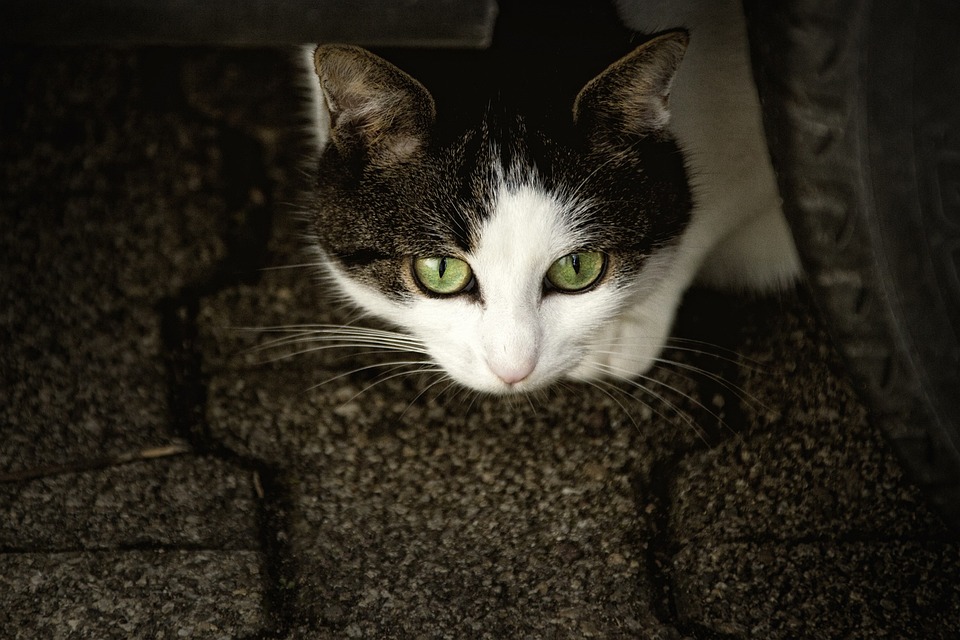Cat fleas can be a nuisance for both cats and their owners. Not only do these tiny parasites cause discomfort and irritation to your feline companion, but they can also lead to various health issues if left untreated.
Identifying the presence of fleas early on is crucial for effective treatment. In this article, we will discuss the signs, symptoms, and diagnosis of cat fleas, helping you keep your furry friend flea-free and healthy.
Signs of Cat Fleas:
1. Unusual Scratching and Biting:
– Increased scratching, biting, or licking, especially around the neck, head, and base of the tail.
– Frequent grooming or overgrooming to alleviate itching caused by flea bites.
2. Flea Dirt:
– Flea dirt appears as small dark specks on your cat’s fur or skin.
– Comb through your cat’s fur with a fine-toothed flea comb, collecting any dirt or debris, and place it on a damp paper towel. If the specks turn reddish-brown when wet, it indicates the presence of flea dirt.
3. Hair Loss and Skin Irritation:
– Excessive scratching and biting can lead to hair loss or bald patches on your cat’s body.
– Inflamed, red, or irritated skin, often accompanied by small bumps or scabs.
4. Pale Gums:
– Fleas can cause anemia in severe infestations, leading to pale gums in cats.
5. Flea Eggs and Fleas:
– Inspect your cat’s fur for tiny white oval-shaped flea eggs, usually found near the base of the hairs.
– Adult fleas can sometimes be seen scurrying through your cat’s fur or on your cat’s bedding.
Symptoms of Cat Fleas:
1. Flea Allergy Dermatitis (FAD):
– Cats with flea allergies are hypersensitive to flea saliva.
– FAD symptoms include intense itching, hair loss, open sores, and skin infections.
2. Tapeworm Infestation:
– Fleas serve as intermediate hosts for tapeworms.
– If your cat ingests a flea while grooming, it can lead to a tapeworm infestation.
– Look for small, rice-like segments near your cat’s anus or in their feces.
3. Bacterial Infections:
– Constant scratching can break the skin, making it susceptible to bacterial infections.
– Symptoms include redness, swelling, discharge, and an unpleasant odor.
Diagnosing Cat Fleas:
1. Visual Inspection:
– Use a flea comb to search for fleas, flea dirt, or eggs.
– Pay close attention to the areas where fleas are commonly found, such as the neck, back, and tail.
2. Flea Testing:
– Place a white towel or sheet on the floor and gently comb your cat’s fur over it.
– If fleas are present, they may fall onto the sheet, making them easier to spot.
3. Veterinary Assistance:
– If you suspect a flea infestation but cannot find any signs, consult your veterinarian.
– They may perform a thorough examination, recommend additional tests, or suggest flea control products.
FAQs About Cat Fleas:
1. How do cats get fleas?
– Cats can get fleas from other infested animals, contaminated environments, or contact with flea eggs or larvae.
2. Can cat fleas bite humans?
– While cat fleas prefer feline hosts, they can bite humans, causing itchy, red bumps.
3. Can indoor cats get fleas?
– Yes, indoor cats can still get fleas if they come into contact with infested animals or environments.
4. Are fleas a year-round problem?
– Fleas can be a problem year-round in warmer climates, while in colder regions, they may be more prevalent during the warmer months.
5. Can fleas transmit diseases to cats?
– Fleas can transmit diseases such as Bartonella (cat scratch disease) and tapeworms to cats.
Conclusion:
By familiarizing yourself with the signs, symptoms, and diagnosis of cat fleas, you can promptly address any infestations and protect your beloved feline from discomfort and potential health complications. Remember, prevention is key, so ensure your cat is on a regular flea control regimen recommended by your veterinarian. With proper care and attention, you can keep your cat happy, healthy, and free from those pesky fleas.








